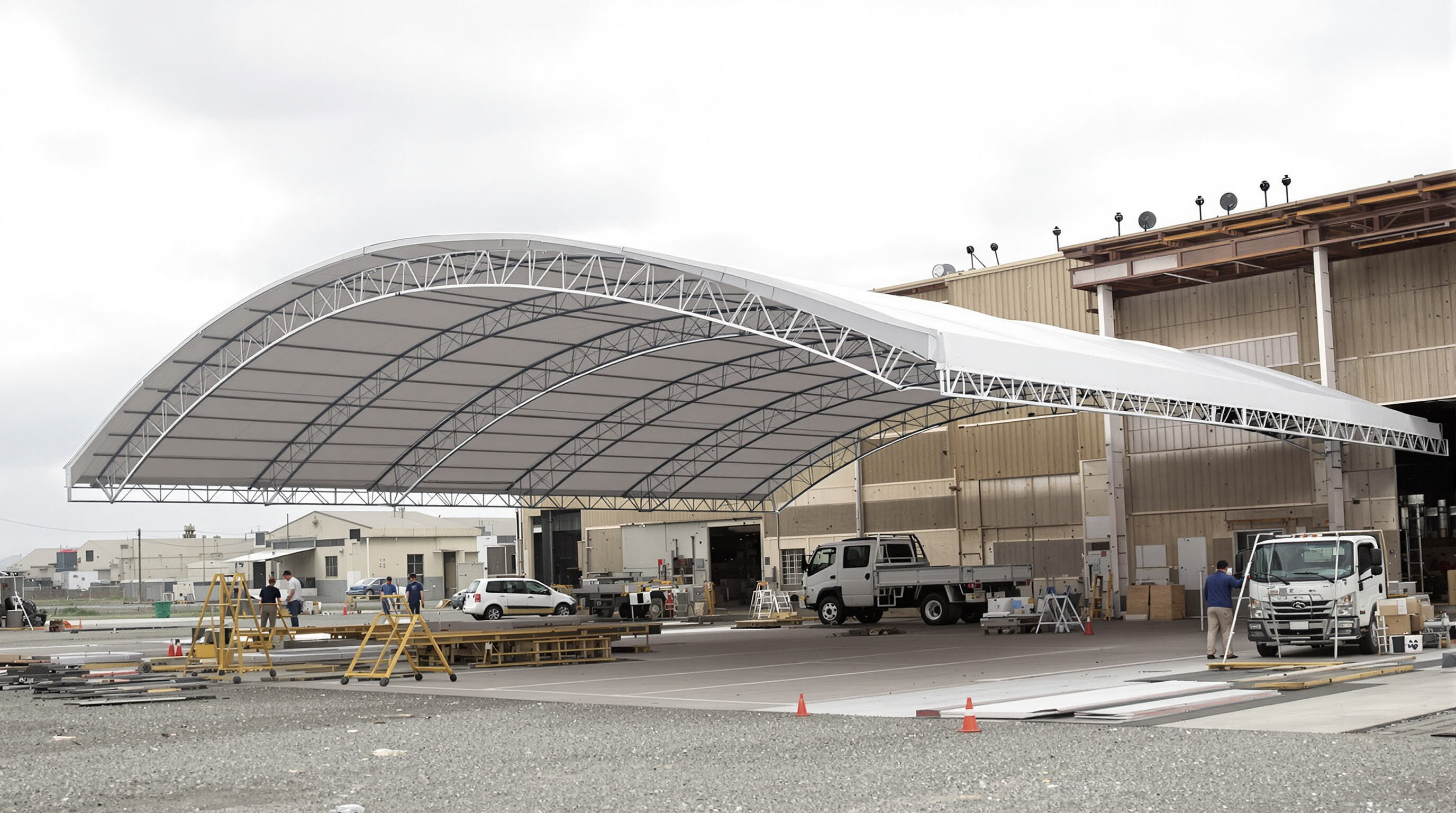Business Advantages of Temporary Carports
Cost Savings and Financial Efficiency with Temporary Carports
Long-term savings through reusable and durable designs
High-quality temporary carports last 15+ years thanks to galvanized steel frames and UV-resistant fabric membranes. Modular components can be relocated across multiple projects, helping construction firms reduce equipment replacement costs by 30%. A 2024 durability study showed these structures retain 90% of their protective capacity after four assembly-disassembly cycles.
Operational Flexibility and Rapid Deployment in Industrial Settings

Quick Installation Without Construction or Permitting Delays
Temporary carports require zero foundation work or zoning approvals, enabling deployment in under 48 hours with basic tools, bypassing the 12–24 week permitting cycles typical for permanent buildings. This rapid setup was critical for a natural gas producer needing immediate equipment shelters during unplanned pipeline maintenance in Alberta’s winter conditions.
Mobility for Dynamic Operations in Construction and Remote Sites
Designed with relocatable frames and detachable roofing, modern carports support site-to-site transfers without full disassembly. Mining companies move shelters between exploration zones, while wind farm contractors transport them along turbine installation routes. Portability reduces the need for duplicate shelters, cutting capital expenditures by 35–50% based on recent logistics studies.
Scalable Solutions That Adapt to Changing Business Demands
Modular carport systems can expand or contract based on operational needs:
- Width adjustments: 20'–60' spans via removable side panels
- Length extensions: Unlimited bay additions with sliding connectors
- Height variations: 12'–20' clearance for specialized equipment
This flexibility allows manufacturers to triple storage capacity during peak seasons or downsize during slowdowns—without permanent infrastructure investment.
Superior Asset Protection in Harsh Industrial Environments
Temporary carports combine weather resistance and structural integrity to protect critical assets in extreme conditions.
Preventing Corrosion and Damage in Mining and Manufacturing
Airborne chemicals in industrial settings accelerate metal degradation by up to 8x. Temporary shelters mitigate this risk by maintaining 40–60% lower humidity levels through ventilated designs, reducing condensation-induced rust. In coastal manufacturing plants, carports with galvanized steel frames extended equipment life from 3 to 7+ years.
Durability and Weather Resistance of Modern Temporary Carport Systems
Today's modern systems incorporate durable 600D polyester fabric that comes with a solid 10 year warranty against UV damage, paired with steel trusses designed to handle rainfall rates of up to 2 inches per hour. According to recent stress testing published in the Industrial Materials Journal last year, these structures maintain around 92% of their original strength even after being exposed to harsh conditions like salt spray and acid rain for what would be equivalent to 15 years in real world conditions. What makes them stand out compared to traditional rigid buildings is how they actually move with the earth during earthquakes. These tension based designs can withstand tremors as strong as magnitude 5.8 on the Richter scale without suffering any lasting damage to their shape or function.
Temporary Carports vs. Permanent Shelters: Strategic Benefits
Faster Deployment and No Long-Term Property Modifications
Temporary carports achieve operational readiness 3–5x faster than permanent structures by eliminating foundation work, construction delays, and zoning approvals (typically 6–12 weeks in industrial zones). Bolt-together frames and anchored fabric covers allow deployment in days. This agility is vital for mining exploration phases and manufacturers undergoing facility upgrades.
Customization and Multi-Purpose Applications of Portable Carports
Portable carports these days do much more than just shield vehicles from weather damage they actually provide flexible setups that businesses can tweak according to their changing needs. The whole point is modularity really what makes them stand out. Companies often begin with something compact but can easily expand later when they need multiple bays for bigger operations. Take mining sites for instance where workers snap together units quickly to build temporary storage areas right on site. Logistics businesses meanwhile prefer those stretchable roof designs because they handle unpredictable stock levels so well during peak seasons or unexpected supply chain disruptions.
Versatile Use in Events, Seasonal Storage, and Field Operations
Temporary carports serve diverse transient needs:
- Construction sites use them as pop-up tool stations
- Agricultural operations stage harvests under UV-resistant models
- Municipalities deploy them as emergency response shelters
The U.S. Department of Energy estimates weather-related equipment damage costs industries $740 million annually (2023)—a risk significantly reduced by purpose-built carports. With 75% of modern designs reusable for at least 10 cycles, these structures offer a practical alternative between temporary needs and permanent investment.
FAQ
What are the cost advantages of using temporary carports over permanent structures?
Temporary carports are 60–80% cheaper upfront compared to traditional structures and offer savings on construction, labor, and permitting expenses. They eliminate the need for poured foundations and complex engineering.
How durable are temporary carports compared to permanent shelters?
Temporary carports are built with galvanized steel frames and UV-resistant fabrics, lasting over 15 years and maintaining up to 90% of their original strength after multiple uses.
Can temporary carports be used in harsh environmental conditions?
Yes, they provide superior protection against UV rays, wind, snow, and debris. They are designed to withstand extreme weather, including earthquakes and high humidity industrial environments.

